MP Board Solutions Class 9 Science Chapter 6 – Tissues
MP Board Solutions for Class 9 Science Chapter 6 – Tissues are essential for understanding key Biology concepts in the MPBSE curriculum. These well-structured answers help students grasp topics like plant and animal tissues, their structure, functions, and classifications. Designed as per the latest syllabus, these solutions strengthen conceptual clarity and improve exam preparation. Ideal for revision and practice, they encourage logical thinking and scientific understanding, making them a valuable study tool for scoring well in Class 9 Science exams.
MP Board Solutions Class 9 Science – Tissues – Exercise Images
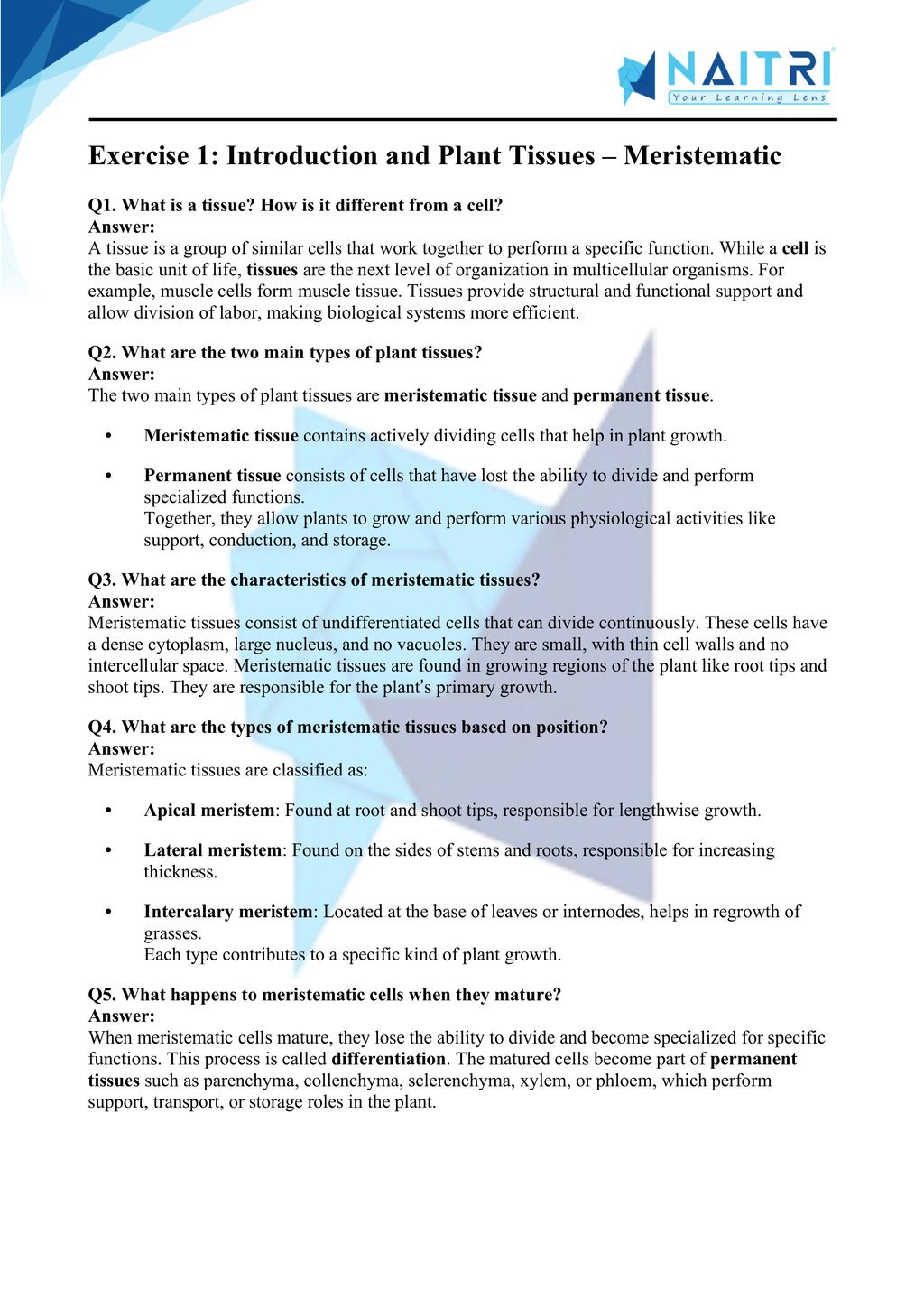
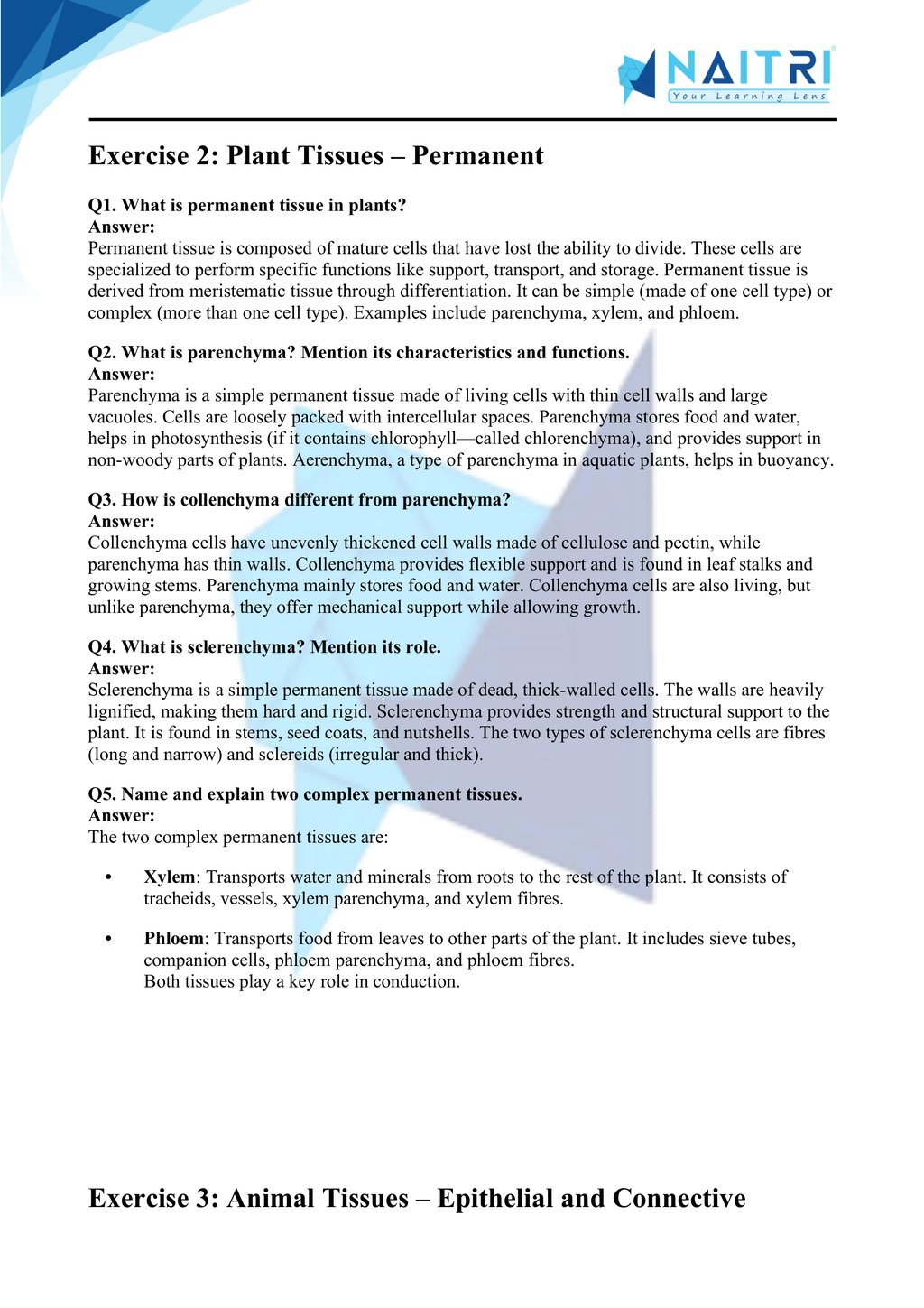
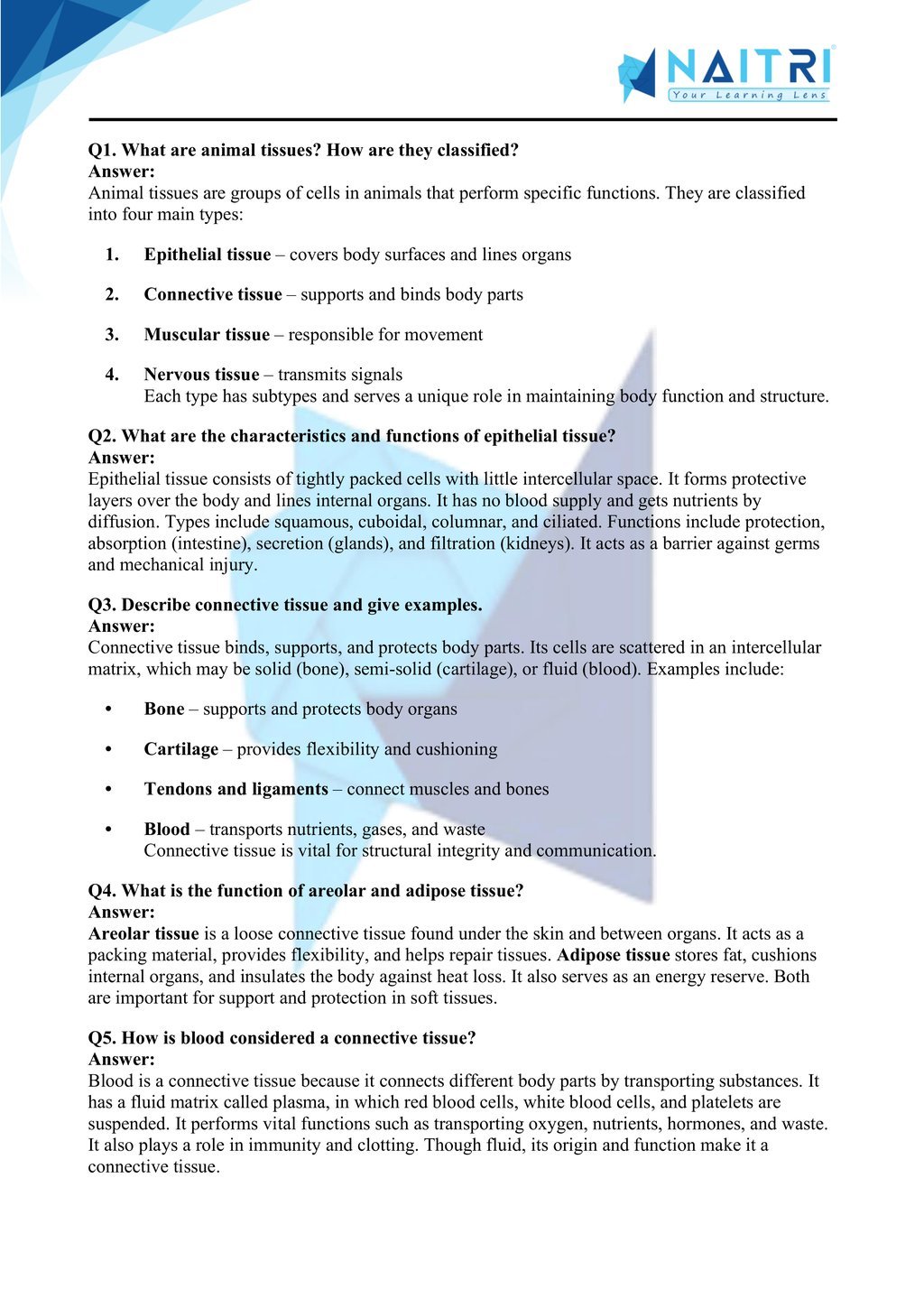
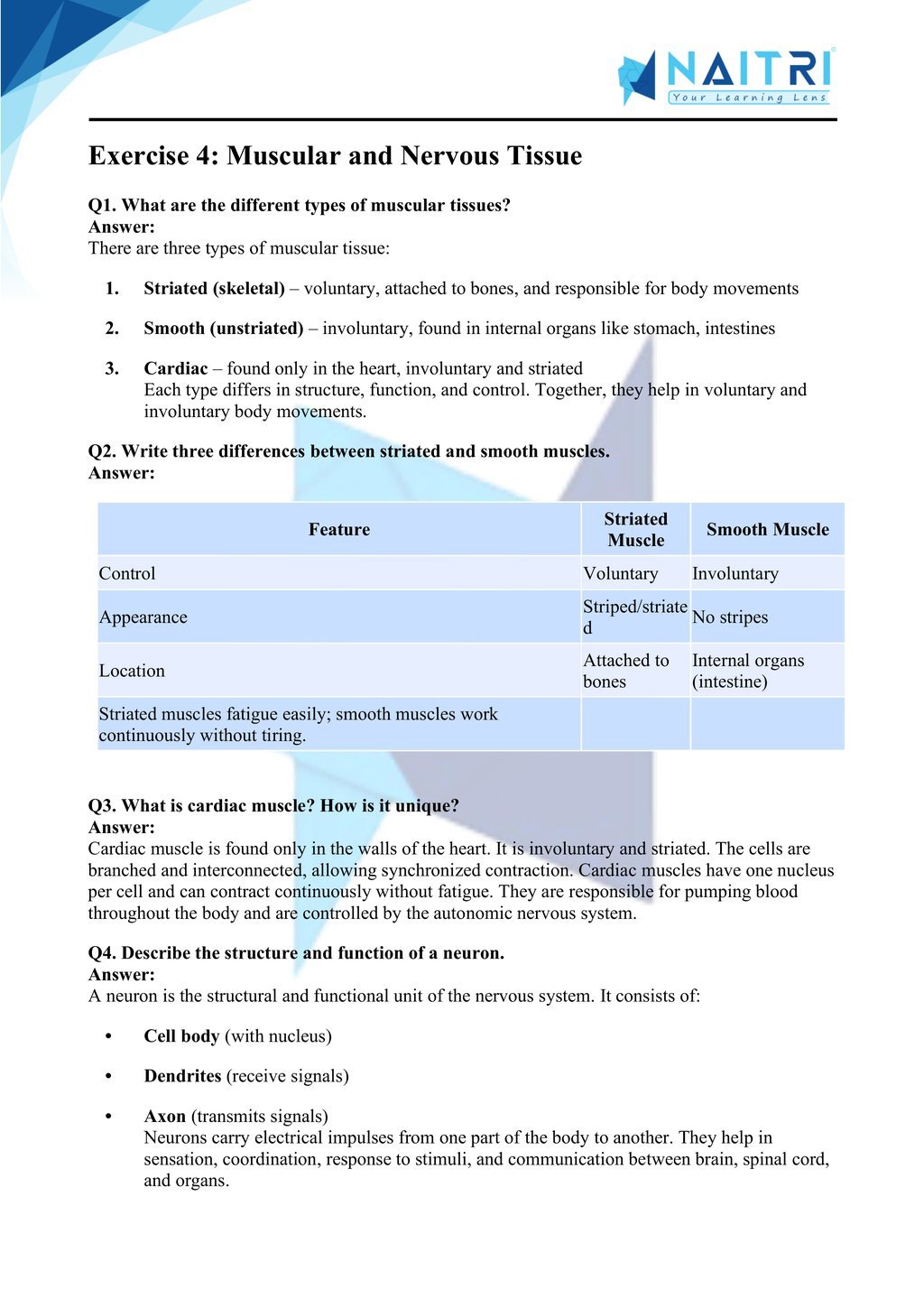
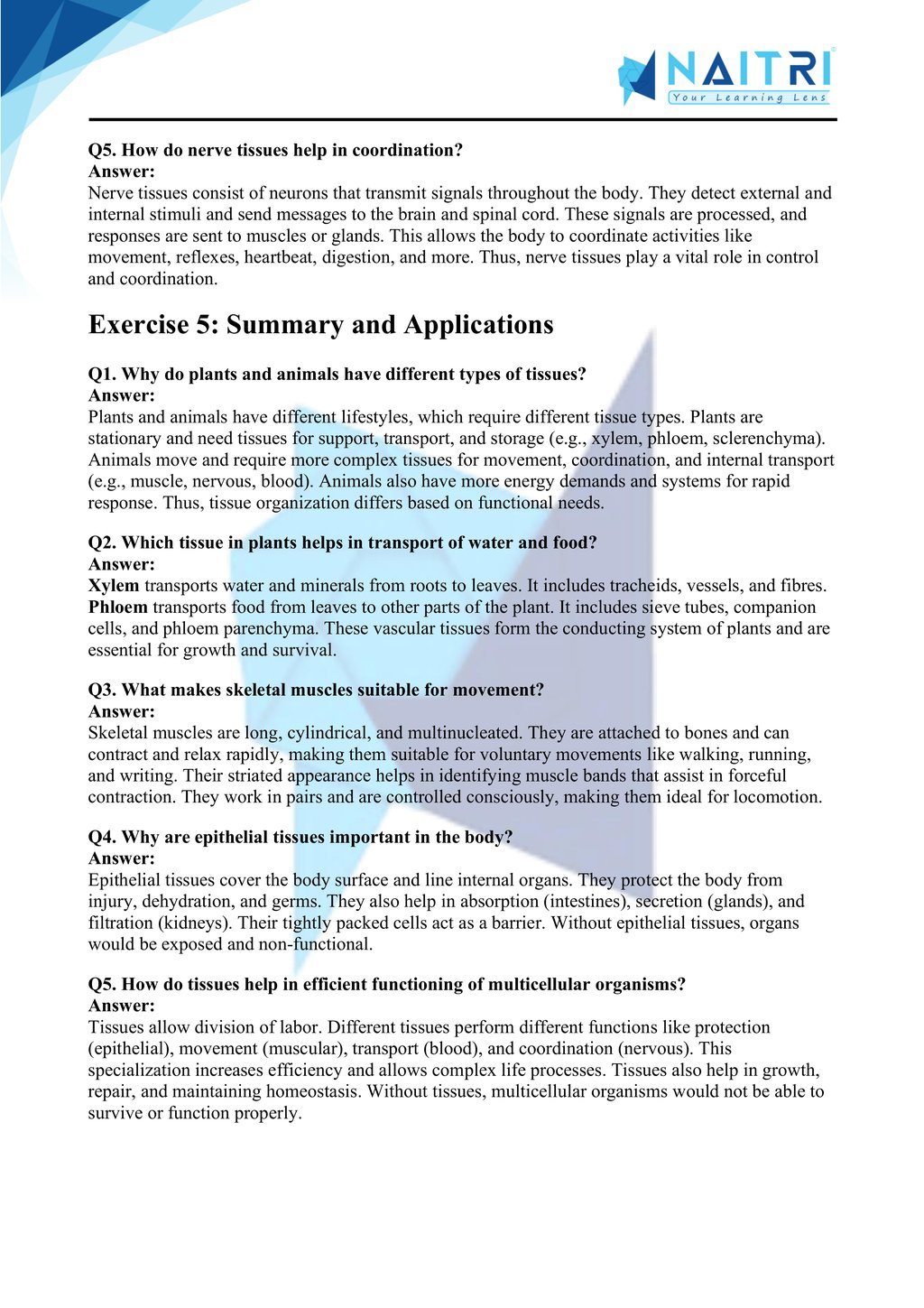
Experience Science Like Never Before – With AR!
Understanding Tissues is now more exciting and immersive! With the NAITRI App, you can explore complex science concepts through Augmented Reality (AR). See muscle fibers contract, plant tissues function, and cellular structures interact — right in front of you. Our AR-powered lessons make learning interactive, 3D, and fun, helping you retain concepts better and enjoy every topic.



Visualize . Interact . Understand . The future of learning is here
Tissues – Important Questions with Answers
1. Define tissue.
Answer: Group of similar cells performing a specific function.
2. Types of plant tissues.
Answer: Meristematic and permanent tissues.
3. Role of meristematic tissue.
Answer: Responsible for plant growth through active division.
4. Categorise meristematic tissue.
Answer: Apical, lateral, intercalary meristems.
5. Function of apical meristem.
Answer: Promotes length growth in stems and roots.
6. What is permanent tissue?
Answer: Mature cells that no longer divide and perform specific functions.
7. Types of simple permanent tissue.
Answer: Parenchyma, collenchyma, sclerenchyma.
8. Role of parenchyma.
Answer: Stores food; performs basic metabolic functions.
9. Collenchyma function.
Answer: Provides flexible support in stems and leaves.
10. Sclerenchyma function.
Answer: Supports plant structure; cells have thick walls and are dead at maturity.
11. What is complex tissue?
Answer: Combination of different cell types working together (e.g., xylem, phloem).
12. Components of xylem.
Answer: Tracheids, vessels, xylem parenchyma, xylem fibers.
13. Function of xylem.
Answer: Transport water and minerals upward.
14. Components of phloem.
Answer: Sieve tubes, companion cells, phloem parenchyma, phloem fibers.
15. Function of phloem.
Answer: Transports food from leaves to rest of plant.
16. Four types of animal tissues.
Answer: Epithelial, connective, muscular, nervous tissues.
17. Role of epithelial tissue.
Answer: Covers body surfaces and lines organs/cavities.
18. Two types of epithelial tissues.
Answer: Squamous and columnar epithelium.
19. Role of connective tissue.
Answer: Supports other tissues; includes bone, blood, cartilage.
20. Components of connective tissue.
Answer: Cells embedded in extracellular matrix (e.g., fibroblasts, collagen).
21. Types of muscle tissue.
Answer: Skeletal, smooth, cardiac muscles.
22. Nervous tissue function.
Answer: Transmits nerve impulses.
23. Basic unit of nervous tissue.
Answer: Neuron.
24. Where are intercalated discs found?
Answer: Cardiac muscle cells.
25. Why is cardiac muscle involuntary?
Answer: Because it contracts without conscious effort.
Tissues builds on the concept of cells, showing how groups of cells form tissues to perform specific functions. The chapter introduces plant tissues (like xylem and phloem) and animal tissues (such as epithelial and muscle tissue). It highlights how specialized cells work together in both plants and animals, aiding understanding of body functions and crop structure—knowledge directly useful in MP’s agriculture and healthcare sectors.
Related Chapters You May Like
Download Naitri App
Easy, Visual Learning — Right on Your Phone
Learn with Augmented Reality! The Naitri app makes CBSE and MP Board concepts interactive and fun — even in low-resource settings. Watch lessons, complete homework, take tests, and track progress — all in one place. Anytime. Anywhere.
Available on








